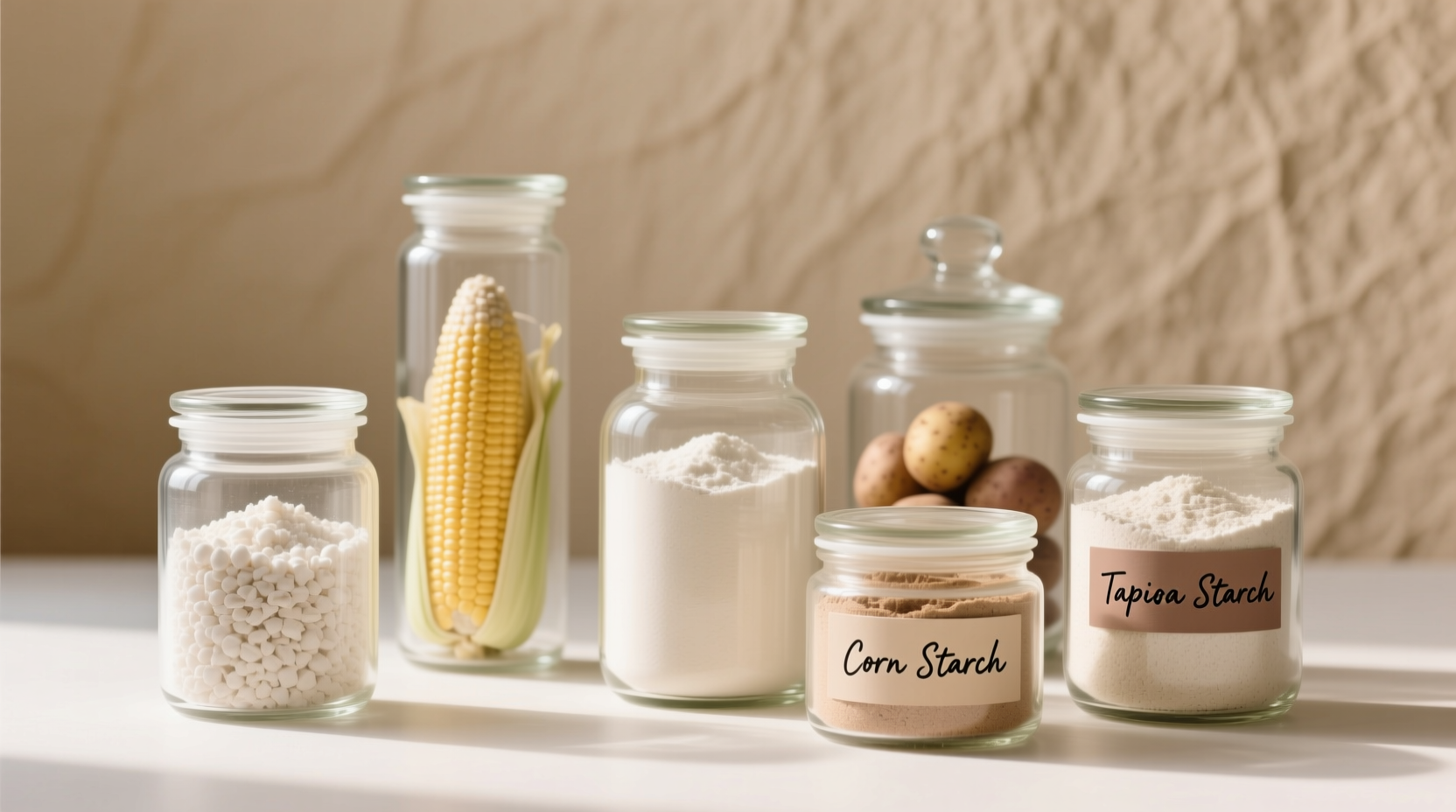When your recipe calls for potato starch but your pantry is running low, knowing the right substitute can save your dish from becoming a kitchen disaster. This comprehensive guide reveals exactly which alternatives work best for different cooking applications, with precise measurements and professional tips you won't find elsewhere.
Why Potato Starch Matters in Cooking
Potato starch serves as a powerful thickening agent with unique properties that make it indispensable in many recipes. Unlike flour, it creates a clear, glossy finish in sauces and doesn't impart any flavor of its own. Its high thickening power means you need less compared to other starches, and it performs exceptionally well at lower temperatures—making it ideal for delicate dishes that can't withstand prolonged cooking.
Food scientists at the Institute of Food Technologists note that potato starch's large granule size (approximately 50-100 micrometers) gives it superior water absorption capabilities compared to other starches, explaining its exceptional thickening power. This scientific property translates to real-world cooking advantages when properly understood and utilized.
Top Potato Starch Substitutes Compared
| Substitute | Ratio | Best For | Limitations | Freeze/Thaw Stable |
|---|---|---|---|---|
| Cornstarch | 1:1 | Sauces, gravies, pie fillings | Becomes thin when frozen; loses thickening power in acidic liquids | No |
| Tapioca starch | 1:1 | Stir-fries, fruit pies, gluten-free baking | Can become stringy if overcooked; slightly sweet flavor | Yes |
| Arrowroot powder | 1:1 | Dairy-based sauces, fruit desserts | Weakens in acidic environments; not suitable for baking | Yes |
| All-purpose flour | 2:1 | Gravies, stews, roux-based sauces | Creates opaque finish; requires higher cooking temperature | Yes |
| Rice flour + xanthan gum | 1.5:1 + 1/4 tsp xanthan | Gluten-free baking | Requires precise measurement; different texture than potato starch | Yes |
When to Choose Each Substitute
Understanding the specific cooking context determines which substitute will deliver optimal results. Professional chefs consider multiple factors before selecting an alternative:
Cornstarch: The Universal Thickener
Cornstarch remains the most accessible potato starch substitute for most home cooks. When using cornstarch, create a slurry with cold liquid before adding to hot mixtures to prevent clumping. The American Chemical Society confirms cornstarch reaches maximum thickening at 95°C (203°F), slightly higher than potato starch's 85°C (185°F), requiring careful temperature monitoring.
Tapioca Starch: The Freeze-Thaw Champion
Tapioca starch shines in recipes requiring freezing and reheating, such as meal prep containers or frozen desserts. Its molecular structure maintains viscosity through temperature fluctuations that would break down potato starch. For Asian cuisine applications, tapioca starch provides the signature glossy finish in stir-fry sauces without clouding the liquid.
Arrowroot: The Delicate Option
Arrowroot works beautifully in dairy-based sauces and fruit desserts where clarity matters. Unlike cornstarch, it doesn't create a 'starchy' aftertaste in delicate custards. However, the USDA FoodData Central notes arrowroot contains less amylose (20-25%) compared to potato starch (22-30%), resulting in a slightly less firm gel structure—critical information for pie fillings that must hold their shape.
Special Dietary Considerations
For gluten-free baking, potato starch contributes to the light, airy texture many recipes require. When substituting in baked goods, use this professional formula: replace each tablespoon of potato starch with 1.5 tablespoons rice flour plus 1/4 teaspoon xanthan gum. This combination mimics potato starch's binding properties while maintaining structure.
Those managing diabetes should note that potato starch contains resistant starch that behaves differently than other starches during digestion. According to research published in the Journal of Nutrition, potato starch has a lower glycemic index (85) compared to cornstarch (90), making substitution decisions relevant for blood sugar management.

Professional Substitution Guide
Follow these chef-tested guidelines for perfect results every time:
- For sauces and gravies: Use cornstarch at 1:1 ratio, but cook 2-3 minutes longer than potato starch
- For pie fillings: Tapioca starch provides superior freeze-thaw stability for fruit pies
- For stir-fries: Tapioca starch creates the authentic glossy finish without clouding
- For dairy sauces: Arrowroot prevents curdling that can occur with cornstarch
- For gluten-free baking: Combine rice flour with xanthan gum using the 1.5:1 ratio
Common Substitution Mistakes to Avoid
Even experienced cooks make these critical errors when substituting potato starch:
- Using equal amounts of flour without adjusting for lower thickening power
- Adding starch directly to hot liquids instead of making a slurry first
- Overcooking arrowroot-based sauces, causing them to become stringy
- Using cornstarch in acidic recipes like tomato sauces, where it loses effectiveness
- Freezing cornstarch-thickened sauces, which breaks down the molecular structure
Remember that each starch has unique temperature requirements for optimal performance. Potato starch thickens at lower temperatures than cornstarch, so when substituting, adjust your cooking time accordingly. The critical temperature threshold where potato starch reaches full thickening power is 85°C (185°F), while cornstarch requires 95°C (203°F).
When Substitution Isn't Possible
Certain recipes absolutely require potato starch for proper texture and structure. These include traditional Japanese mochi, certain European dumplings, and some gluten-free bread recipes where the specific starch properties are integral to the final product. In these cases, seeking out potato starch at international grocery stores or online retailers remains the best option.











 浙公网安备
33010002000092号
浙公网安备
33010002000092号 浙B2-20120091-4
浙B2-20120091-4